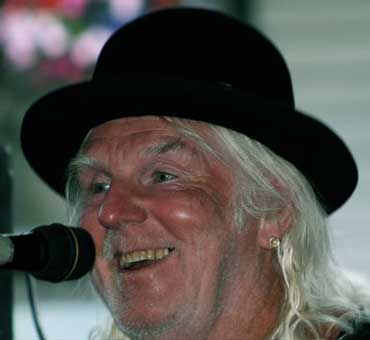CD
follows the life of an islander
By
SEAN MCINTYRE
Staff
Writer
A
new album from singer-songwriter Harry Warner traces the artist's
voyage from his native Ireland to Salt Spring and brings listeners on a
melodious journey through history in the process. "This
is something I'd wanted to do for years," said Warner in a telephone
interview from his south-end home. "The goal was to write and play
songs about youth and my life, at least until now."
Appreciation
of Galway to Ganges grows with time and though those unfamiliar with
Irish song may initially feel inclined to hold back, a few listens will
have all but those with the raspiest of voices tapping a foot and
singing a ditty. The
overarching themes of exile and new beginnings permeate the album, much
as they have the life of Harry Warner.
Like
so many who have moved to Salt Spring Island from elsewhere, the former
professor of mathematics from Ryerson University in Toronto said moving
here seemed like "one of those things in life that seemed right."
This
is Warner's third record since he moved to Salt Spring 15 years ago.
Previous releases included works with the groups Spanner in the Works
and the Black Velvet Band. Longtime musical partners Jo Lundstrom and
Terence Warbey joined him on the latest release. The
album provides a well-balanced blend of Irish folk and classic American
country ballads.
Out of the mix are the roots of what may be called a distinctively Salt
Spring-bred sound. Songs
such as the title track and The Burgoyne Mermaid please the ear and
strengthen the spirit by speaking to the familiar. Warner
himself said Salt Spring was blessed with an abundance of artistic
talent, but hesitated when questioned about the growth of an
island-bred musical style. "Quite
candidly, there's too much of an influx and outflux of people for a
Salt Spring sound to develop," he said. "People come for two, three or
five years and then they move on." Despite
the nomadic nature of musicians, he said, island music is encouraged by
the venues hosting local acts and the success of this year's Salt
Spring Folk Club.
In
Warner's view, the ideal would be to form a Salt Spring dance band. The
group could comprise musicians of various stripes gathering several
times a year to perform the polka, foxtrot and other such dances for
all to enjoy. In
spite of the obstacles involved with organizing such a grand project,
Warner refused to give up hope and said, like many things on Salt
Spring, it will most likely pop up when least expected.

